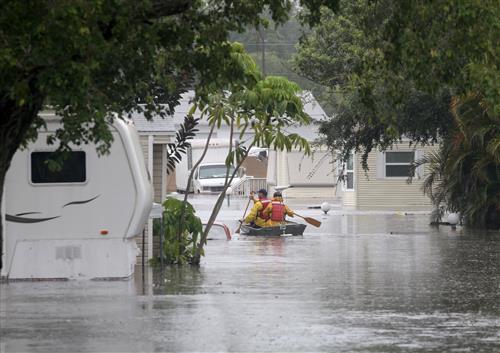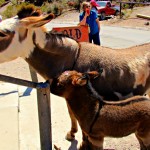If you are caught out when Mother Nature throws some El Niño weather at you, or if you just like being out in the middle of the action, you may have to take refuge in a campground until the torrential downpours, blustery winds and hoards of locusts pass. Well, maybe not the locusts. But just because you take temporary protection in a campground does not mean you are safe. You can be safer, however, by taking these simple precautions before snuggling down in your RV to wait out the tempest.
- Look around you for dead or dying trees and limbs overhead that look like they could fall. The West is suffering a multi-year drought, and it has taken its toll on trees. If any such trees tower over or lean into your intended campsite, you might want to choose another site. Strong winds could bring them down on top of your RV.
- Avoid sites close to the banks of a river, stream, or if in the desert, normally dry arroyos and creek beds. These could overflow in heavy rain causing dangerous flash flood conditions.
- Look for steep-sided roads or recently burned over areas that could result in mud slides during heavy rain that could block entrances and exits from campgrounds. Stay away from campsites near steep banks that could be inundated by a mud or rock slide or could block a single entrance to your campsite leaving no escape route.
- Campsites in low areas or depressions could also flood just from rain runoff collecting in the lowest spot.
- Blocked or washed out roads could prevent you from leaving your campground even after the storm conditions pass by. (My wife and I were stranded for five days on the Big Sur coast when mud and rock slides blocked the highway in both directions during the El Niño of 1997-1998). Make sure there are alternative exit routes.
- If there are El Niño warnings, stock up on enough emergency supplies and food to last for several days if you do get stuck—especially drinking water and prescriptions. Likewise, your propane and water tanks should be full before you hit the road. A propane heater would be nice if you were stranded without electricity, as well as a shovel (to dig your rig out if necessary). A first aid kit should already be part of your emergency supplies.
- A battery-operated charger and extra batteries will keep your cell phone charged. Texting may be your only means of communication with the outside world (often, texts will send when email and phone calls will not).
No one can predict what El Niño will bring, so it makes sense to be prepared. And if you are, you just may feel safe enough to enjoy what could be the biggest El Niño ever recorded and end up with lots of stories to tell your grandkids.
You can find Bob Difley’s RVing ebooks on Amazon Kindle.
Follow on Facebook and Twitter



